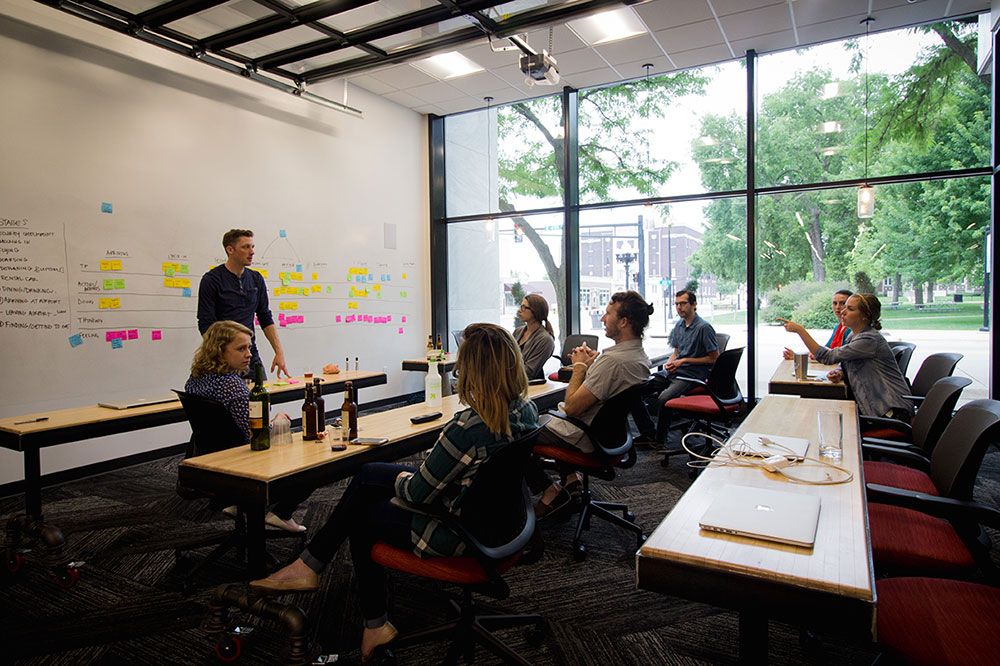Chick-fil-A vs McDonald's: Which Fast-Food App Has the Better UX?
8 min read
Chick-fil-A vs McDonald’s: Which Fast-Food App Has the Better UX?
Why it matters: A business’s app often attempts to blend a digital experience with their in-person customer experience—think retail, banking, and restaurants. These experiences reveal how UX design impacts overall customer satisfaction and loyalty. In competitive markets, these experience differences can create repeat customers, or leave a lasting and negative impact. Let’s take a closer look at two fast-food giants, Chick-fil-A and McDonald’s, to see how both of their mobile ordering experiences stack up.
Key Takeaways:
- The digital experience sets the tone for the physical one—people feel your brand long before they step inside.
- Consider organize information around user goals, not categories that have to be learned.
- Anticipation is the highest form of usability—great systems stay out of the way and feel almost invisible.
- Loyalty comes from ease, delight, and perceived value—not from reward systems that confuse users with fine print or hoops to jump through.
Can I take your order?
When it comes to mobile ordering apps, not all chicken nuggets are created equal. As a UX practitioner, I can’t help but analyze how two fast food giants take very different approaches to experience design. But for everyday customers, these differences manifest as feelings while using an app: frustration, delight, surprise, confusion. While both apps technically get the job done (you order food, you pick it up, you eat it), one of them clearly leaves customers feeling delight with a smoother, more intuitive experience. Spoiler: it’s not the Golden Arches.
Let’s dig into the why, and along the way highlight some core UX concepts—like information architecture, intuitive flows, and reward system usability—that can make or break an app experience.
1. Navigation & Information Architecture: Finding What You Want, Fast
Information architecture (IA) is the backbone of any digital experience. It’s how everything is organized, nested, grouped, and searched. In this case, think of it as the menu board of the app organizing your food options: if you can’t find what you want quickly, frustration builds.
-
Chick-fil-A Approach: Navigation is clear, and the menu doesn’t feel overwhelming with 9 groups of menu items. They’ve taken the “meals, entrees & sides” approach, encouraging users to first answer the question, “Do I want a meal?” first.
Result: Users get a progressive disclosure of menu items, reducing initial options and clutter —they’ve narrowed things down by customer goal first, before trying to assume how the user might categorize their food groups.
-
McDonald’s Approach: The app often feels like a maze. New users can get lost in the sauce(s), before they even place an order for a cheeseburger. McDonald’s takes an “a la carte approach,” organizing first by type of food item, and asking the user at the end of their customization if they want it to be a meal. This mimics their in person experience, but fails to have the same effect in an app.
Result: In reality first time users are left wondering, “Well, how do I order a meal?” & “Is a chicken sandwich a burger? What else would it be?” I can’t tell you how many times I’ve heard this type of sentiment from people trying to order from the app. If you don’t believe us, try it yourself or read about other’s experiences on Reddit (one of my favorite places to understand user frustrations at a large scale, a good place to do lightweight digital ethnography).
Lesson: A strong IA isn’t just about organizing content; it’s about prioritizing the user’s goal. They were able to identify the “meals, entrees & sides” approach as their winning combination. We suspect that a healthy amount of user validation was done to ensure that this fit their customers best—this is reinforced by the experiments we see in their current drive-thru experience. In addition, Chik-fil-a has strived as a business to really condense their menu, allowing them greater flexibility and design opportunities.
That focus on goal-oriented structure—rather than internal categories and traditional experiences—is what makes any product feel effortless, whether it’s a fast-food app, a personal finance manager, or a healthcare portal.
Listen: How UX worldbuilding helps you connect with customers
2. Drive-Thru Interactions: Smooth and Safe
A drive-thru app interaction should feel like a unique benefit—efficient, predictable, and safe. It should have benefits outside of just taking advantage of digital coupons and discounts.
- Chick-fil-A: The app seamlessly integrates pickup at the drive-thru. Once you place your order, it shows your next 3 steps towards getting your order (including driving directions). Users feel guided and reassured at each step. Once the order is placed, you don’t need to touch or look at the app again, it already knows your vehicle type, name, and location for when you’ve arrived—they’ve been expecting your arrival.
- McDonald’s: The instructions post-ordering are brief and sometimes unclear, a customer may think: “if I say my name will they know it’s my order or do I have to say this code? What’s the code for if I don’t have to use it?” The app reloads with your code in big bold text displayed only after you’ve arrived, so you’re encouraged to open up the app again (presumably as you’re driving into the drive thru—a safety concern). This confusion and added steps adds unnecessary friction, at the cost of safety.
Lesson: Good UX creates clarity, and illuminates visibility of system status, without compromising safety. When the app guides users confidently and carefully anticipates their intent, they feel taken care of rather than left guessing. This leads to an almost-invisible experience—essential for brands that want to seamlessly blend their digital and in-person journeys.
Learn more: Anticipating user needs
3. Rewards & Flexibility: Power to the User
Loyalty programs are one of the most important UX touch points. A well-designed reward system can turn casual customers into lifelong fans.
- Chick-fil-A: Points add up, and users get to decide how and when to spend them. That sense of control is empowering. However, there’s room for improvement—redeeming these rewards forces you to navigate away from the order to a separate page. This system driven flow creates unnecessary navigation and friction.
- McDonald’s: While the rewards are plentiful, and the deals are great, the redemption feels restrictive. Users cannot redeem multiple rewards in one order, even if they’ve earned them. This makes the rewards feel like marketing tactics rather than genuine perks, and makes users think more about how the system works instead of enjoying the benefits they’ve earned for being a repeat customer. Additionally, if you add a special deal to your order first, you’re met with errors and pop ups saying that you haven’t met the requirements of the deal yet. This system inflexibility doesn’t cater to the different order of operations that a customer might choose to build their order.
Lesson: Rewards systems should feel like a gift, not a puzzle. Chick-fil-A gets closer to this ideal, but even their flow could be improved. By providing flexibility, options your customers feel are relevant, and perks that delight rather than frustrate, you can create an experience that customers come back to, again and again.
The Winner: Chick-fil-a
The Chick-fil-A app isn’t perfect, but it clearly demonstrates stronger human-centered design choices.
- Navigation: Chick-fil-A simplifies menus; McDonald’s overwhelms with categories.
- Drive-thru: Chick-fil-A guides users smoothly; McDonald’s creates uncertainty and intrusive experiences.
- Rewards: Chick-fil-A offers flexibility; McDonald’s restricts redemption.
By prioritizing their customers’ goals, clarity, safety, and flexibility, Chick-fil-A exemplifies how thoughtful design decisions can create a positive (and delightful) experience. We can tell that they’ve thoughtfully crafted an experience that’s likely based on real customer testing and feedback.
The Big Picture: Why This Matters
Comparing Chick-fil-A and McDonald’s apps highlights something bigger than fast food. It shows how UX principles like clear information architecture, smooth interaction design, and flexible reward systems directly impact user trust and satisfaction.
This also illuminates a distinct difference in strategic business decisions. Chick-fil-a makes their app experience feel as smooth and customer-centered as the restaurant experience in-person. With features like mobile order at your table, they’ve done what many other restaurants in the post-covid era have tried and failed to do; namely, integrating apps into the dining experience in a way that feels complementary and helpful, not like a cost-cutting or marketing nuisance. Their customer loyalty comes from ease, delight, and perceived value—not from rewards systems that confuse users with fine print or hoops to jump through. In contrast, McDonald’s just feels like another app on your phone that you only use because you want the app-only coupon (that may not even work correctly when you try to use it).
When apps frustrate users—people notice. They might not use UX terminology to describe it, but they feel it. And in a competitive market, those feelings can decide which drive-thru line they’re pulling into next time.





